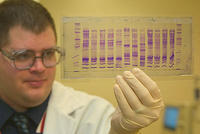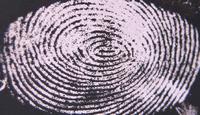-
Police still use sketch artists despite advances in surveillance technology
Despite the growing use of surveillance technology to monitor public and private spaces, some law enforcement departments still rely on composite sketches to help solve crimes. Some police departments are continuing the use of hand-drawn sketches because they are the only available method to identify suspects, but some departments are continuing to use the tool for nostalgia.
-
-
DNA data management specialist DNAnexus secures $15 million in Series C financing
Mountain View, California-based DNAnexus, a specialist in cloud-based solutions for large-scale DNA data management and analysis, on Friday announced that it has closed a $15 million Series C funding led by Claremont Creek Ventures, Google Ventures, TPG Biotech, and First Round Capital. The company says that its Platform-as-a-Service (PaaS) is being adopted by more customers seeking a solution to the needs of global enterprises face when building clinically compliant analysis pipelines for DNA sequence data.
-
-
Longstanding forensic identification technique questioned
Forensic experts have long used the shape of a person’s skull to make positive identifications of human remains. Those findings, however, may now be called into question, since a new study shows that there is not enough variation in skull shapes to make a positive ID.
-
-
Using keyboard, mouse, and mobile device “fingerprints” to protect data
Passwords are not secure because they can be hacked or hijacked to get at sensitive personal, corporate, or even national security data. Researchers suggest a more secure way to verify computer users and protect data: tracking individual typing patterns. The researchers are now working on developing ways to identify and track individual patterns of using a mobile device or a computer mouse.
-
-
U.S. intelligence community seeking better face recognition biometrics
Intelligence analysts often rely on facial images to assist in establishing the identity of an individual, but too often, just examining the sheer volume of possibly relevant images and videos can be daunting. While biometric tools like automated face recognition could assist analysts in this task, current tools perform best on the well-posed, frontal facial photos taken for identification purposes. The Intelligence Advanced Research Projects Activity (IARPA), the research arm of the U.S. intelligence community, is seeking significantly to improve the current performance of face recognition tools by fusing the rich spatial, temporal, and contextual information available from the multiple views captured by today’s media.
-
-
Body of evidence: bodies offer cues for recognizing people
Computer recognition of people has focused almost exclusively on faces, but a new study suggests it may be time to take additional information into consideration. A new study describes a series of experiments that demonstrates there is potentially more valuable information for biometrics-based identity recognition in images of people than the face alone.
-
-
DHS testing face recognition biometrics
DHS is exploring the capabilities of facial recognition programs, and the technology’s implication for government and first responders. Initial stages of the project will begin by comparing video footage of people moving throughout the Toyota Center in Kennewick, Washington with combined mock profiles of volunteers.
-
-
Hand scanners as mark of the beast
The Equal Opportunity Employment Commission (EEOC) sues a Pennsylvania mining company for forcing an employee into an early retirement after he refused to use a biometric hand scanner to track his hours. The employee argued that using the scanner would violate his Evangelical Christian beliefs in the Bible’s mark of the beast prophecy. According to the Christian Bible, the mark is implanted on the forehead or right hand and symbolizes allegiance to the antichrist.
-
-
More equitable access to DNA identification after disaster or conflict needed: experts
The April 2013 collapse of the Rana Plaza Factory Building in Bangladesh, in which more than 1,130 people were killed, is only the latest in a long line of events that has made plain the plight of the families whose loved ones go missing after conflict and disaster. Experts argue that international structures are needed to promote more equal access to forensic identification technologies, ensure their fair and efficient use, and provide uniform protections to participants following large-scale conflict and disaster.
-
-
New systems improve voice recognition
Graduate students and researchers at the University of Texas Dallas have developed novel systems that can identify speaking voices despite conditions that can make it harder to make out a voice, such as whispering, speaking through various emotions, or talking with a stuffy nose.
-
-
Police’s facial recognition program becomes a political issue in Ohio
Attorney General Mike DeWine of Ohio confirmed last week that local and state law enforcement have used facial recognition software since June of this year to match images of potential suspects and victims to pictures on the state’s drivers’ licenses and mug shots. The Democratic challenger for the Attorney General post faulted DeWine’s office for launching the program on 6 June without any public notice.
-
-
Iris recognition useable as a long-term form of identification
For decades, researchers seeking biometric identifiers other than fingerprints believed that irises were a strong biometric because their one-of-a-kind texture meets the stability and uniqueness requirements for biometrics. Recent research, for example, has questioned that belief, finding that the recognition of the subjects’ irises became increasingly difficult, consistent with an aging effect. Other researchers, however, found no evidence of a widespread aging effect. A computer model used to study large populations estimates that iris recognition of average people will typically be useable for decades after the initial enrollment.
-
-
Forensic familial DNA searches carry risk of certain false matches

DNA-based familial search may misidentify distant relatives of known offenders as close relatives. Familial searches can reliably distinguish first-degree relatives from unrelated individuals, but may misidentify distant relatives as being immediate family, according to this new research.
-
-
In a law suit, Okla. woman argues biometric driver’s license is “a sign of the Antichrist”
An Oklahoma woman was denied a driver’s license after she refused to allow the Oklahoma Department of Public Safety (DPS) to collect her biometric information, which is required for the state’s new driver’s licenses. She is now suing DPS, saying that giving the state biometric information would violate her religious beliefs: collecting such information, she argued in her court filing, is “the beginning stages of the [Biblical] mark of the beast,” a sign of the Antichrist which is mentioned in the Bible’s Book of Revelation.
-
-
Highly sensitive fingerprint technique developed

Researchers have developed a new and extremely sensitive method for visualizing fingerprints left on metal surfaces such as guns, knives, and bullet casings. The technique utilizes color-changing fluorescent films and the researchers say that it can be used to complement existing forensic processes.
-
- All
- Regional
- Water
- Biometrics
- Borders/Immig
- Business
- Cybersecurity
- Detection
- Disasters
- Government
- Infrastructure
- International
- Public health
- Public Safety
- Communication interoperabillity
- Emergency services
- Emergency medical services
- Fire
- First response
- IEDs
- Law Enforcement
- Law Enforcement Technology
- Military technology
- Nonlethal weapons
- Nuclear weapons
- Personal protection equipment
- Police
- Notification /alert systems
- Situational awareness
- Weapons systems
- Sci-Tech
- Sector Reports
- Surveillance
- Transportation
Advertising & Marketing: advertise@newswirepubs.com
Editorial: editor@newswirepubs.com
General: info@newswirepubs.com
2010-2011 © News Wire Publications, LLC News Wire Publications, LLC
220 Old Country Road | Suite 200 | Mineola | New York | 11501
Permissions and Policies
Editorial: editor@newswirepubs.com
General: info@newswirepubs.com
2010-2011 © News Wire Publications, LLC News Wire Publications, LLC
220 Old Country Road | Suite 200 | Mineola | New York | 11501
Permissions and Policies
